Donington Grand Prix Collection: a fond farewell to the UK's 'sumptuous' motorsport museum
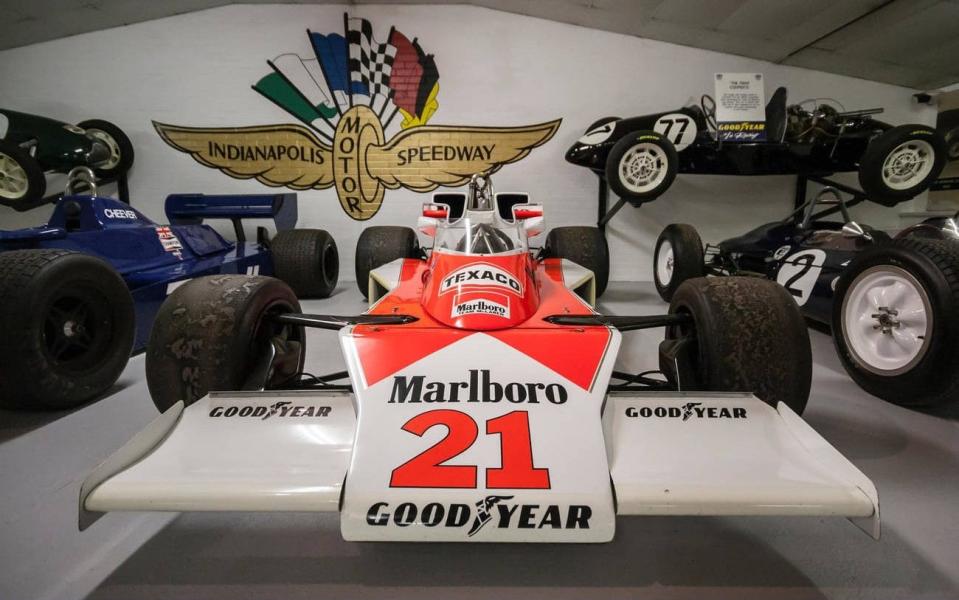
On the second weekend in October all evidence suggested this was a tourist trap of some distinction, but the reality was more prosaic. The car park was overflowing, ditto the walkways within the adjacent building, but this sudden footfall was a consequence of people turning up to pay their last respects, to see an assembly of distinguished racing cars for the final time.
A few days beforehand, it had been announced that the Donington Grand Prix Collection was to close after more than 45 years. Beyond November 5, it will be no more.
The news was perhaps inevitable. In recent years, a visit to the Collection has often been a stroll into solitude. If you arranged to meet a friend there, chances are that you’d be the only souls present. Yet when it opened in March 1973, it was a beacon of great hope.
It was the brainwave of successful local businessman Tom Wheatcroft (1922-2009), whose passion for motor racing had been fuelled by trips to Donington Park in the 1930s – not least towards the decade’s end, when Bernd Rosemeyer and Tazio Nuvolari won the 1937 and 1938 Donington Grands Prix, Auto Union beating arch-rival Mercedes-Benz and both German teams reducing the rest of their opposition to a pulp.
When racing ceased in 1939, with the Second World War imminent, the Ministry of Defence acquired the site as a storage depot and there seemed little prospect of the sport’s resumption beyond the cessation of hostilities. Except, perhaps, in the mind of one man.
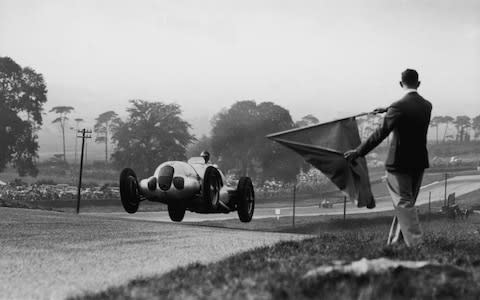
Following active service (he’d driven tanks during the war), Wheatcroft started what was to become a successful construction company – and this in turn provided him with the means to sate his passion for racing by building up a collection of notable cars, including the Ferrari 500 that Alberto Ascari used to devastating effect en route to his two world titles in 1952 and ’53.
Initially his acquisitions were stored in a building close to the family home, but Wheatcroft had long dreamed of bringing motor racing back to Donington Park – and his Grand Prix Collection would be the first manifestation of that, a sign of life returning to the derelict venue. He bought a significant chunk of the Donington Hall estate in 1971, including the area that had once contained the track, and set to work.
Unique in the world of motor racing, the Donington Grand Prix Collection opened in March 1973, in a building whose plan view mimicked that of a crankshaft, and was rapturously received.

It was a hub in which enthusiasts could gather to savour their sport’s past – and much of the content was sumptuous. Aforementioned Ascari Ferrari apart, Wheatcroft owned a wide selection of BRMs, a full suite of cars from motor racing’s first world champion constructor Vanwall (including the scarcely used, rear-engined VW14), the Lotus 18 in which Stirling Moss had scored against-the-odds victories against Ferrari at Monaco and the Nürburgring in 1961 and an ex-Jack Brabham BT3, the first eponymous grand prix car the Australian had built – and raced.
A few months beyond the museum’s opening, Wheatcroft suffered the pain of losing his racing protégé Roger Williamson, killed needlessly in the 1973 Dutch GP: it wasn’t so much that the rescue services were slow to respond to his fiery accident, more that they barely responded at all. Wheatcroft had been a generous supporter of Williamson’s single-seater career and an appropriate memorial was duly assembled within the Collection, a permanent feature among an occasionally fluctuating cast of exhibits.

The cars Wheatcroft owned were often joined by others loaned by pedigree constructors such as Brabham, Williams and McLaren. But more than 40 years have passed since the Collection was the only reason to visit. After a long battle to gain planning consent, Wheatcroft eventually succeeded in bringing racing back to Donington Park and it reopened for the purpose in May 1977, since when circuit and museum have been convenient neighbours.
There have been a few awkward moments along the way: one short-lived track leaseholder successfully prised the British GP contract away from Silverstone, began tearing out the venue’s heart to commence preparations and then ran out of money while the place remained a building site.
Competitive activities ceased for about 18 months, but Wheatcroft’s son Kevin stepped in to refettle the track and it reopened in 2010, since when much of its lustre has been restored – not least because MotorSport Vision (whose portfolio also includes Brands Hatch, Oulton Park, Cadwell Park and Snetterton, all of which have been transformed for the better during its tenure) took over the operational lease at the start of 2018.

Donington Park currently looks in better condition than it has for many a year, but the Collection has not kept pace. A number of the more interesting cars have been sold (or else returned to their owners), there was some resentment that Wheatcroft Jnr had brought in his collection of military hardware (comprehensive, but not necessarily a natural complement to the original inmates) and there were no attempts to modernise the displays: it retained some allure for aficionados, but its customary emptiness made it feel somewhat forlorn, an analogue relic in a digital age.
Kevin Wheatcroft retains the site freehold and said, a few days after the closure was confirmed: “We kept the museum open for one season after MSV took control and there was a possibility that it might have stayed open, but it does not fit their business plan – and the decision to close was then made. Its exhibits will go into storage until my family and I have considered their future.”
Its demise is sad, but no great surprise. To be among the 2.5 million visitors estimated to have browsed its contents remains a wonderful privilege.
Simon Arron’s top 5 Donington Collection alumni
1935 Alfa Romeo Bimotore

As Mercedes-Benz and Auto Union grew in competitive stature during the 1930s, previous powerhouse Alfa sought a response. On its behalf, Scuderia Ferrari lengthened a P3 chassis and fitted it with two eight-cylinder engines, one ahead of the driver and the other aft. The result was prodigious fuel consumption, excess weight that accelerated tyre wear… and continued success for the German teams. After the project was dropped, British privateer Austin Dobson bought one of the two cars built and raced it at Donington.
1949 Ferrari 125
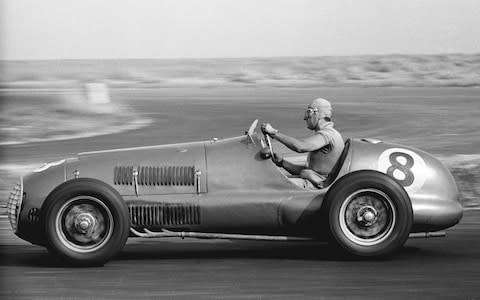
The first pedigree racing car Wheatcroft acquired, so effectively the Collection’s starting point. Originally raced by Yorkshireman Peter Whitehead, who took it to third place in the 1949 French Grand Prix at Reims.
1973 March 732
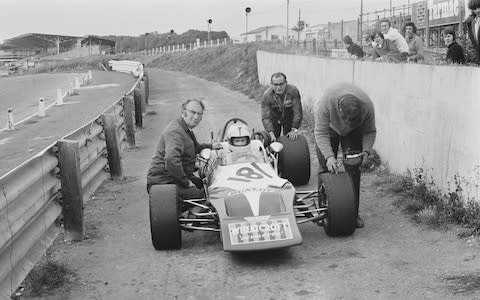
Bought by Tom Wheatcroft and run by Wheatcroft Racing International for Roger Williamson, one of the UK’s rising stars. On June 26 he used this car to win the Monza Lottery, 10th round of the highly competitive European F2 Championship. Little more than a month later Williamson was gone, killed in an accident during the Dutch GP – only his second F1 race. He was just 25 and a memorial display was set up within the Collection.
1977 LEC CRP1
Not so much a car as its crumpled remains. For many years it stood as tribute to David Purley’s remarkable survival after a violent accident during pre-qualifying for the British GP. The car hit the sleepers head-on after its throttle jammed open and decelerated from about 110mph to rest in little more than two feet. Purley suffered terrible injuries, but recovered to race again. The wreckage was eventually sold and a new LEC was built to compete in modern-day historic racing.
1978 Brabham BT46B
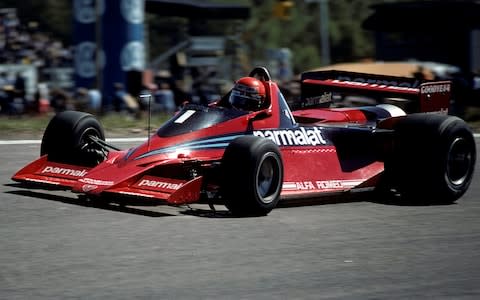
After Lotus revolutionised the F1 world with ground-effect aerodynamics, Brabham designer Gordon Murray came up with this. The large fan at the back was claimed to improve cooling of the Alfa Romeo flat-12, but also had the side benefit of extracting air from beneath the chassis and effectively sucking it to the track. Niki Lauda dominated the Swedish GP and Brabham boss Bernie Ecclestone subsequently withdrew the car; it was never officially outlawed, but in the political climate of the age it was expedient for Ecclestone to maintain the peace with his fellow team owners…
For tips and advice, visit our Advice section, or search car reviews in our A-Z Car Finder
More classic car stories at Telegraph Cars


 Yahoo News
Yahoo News 